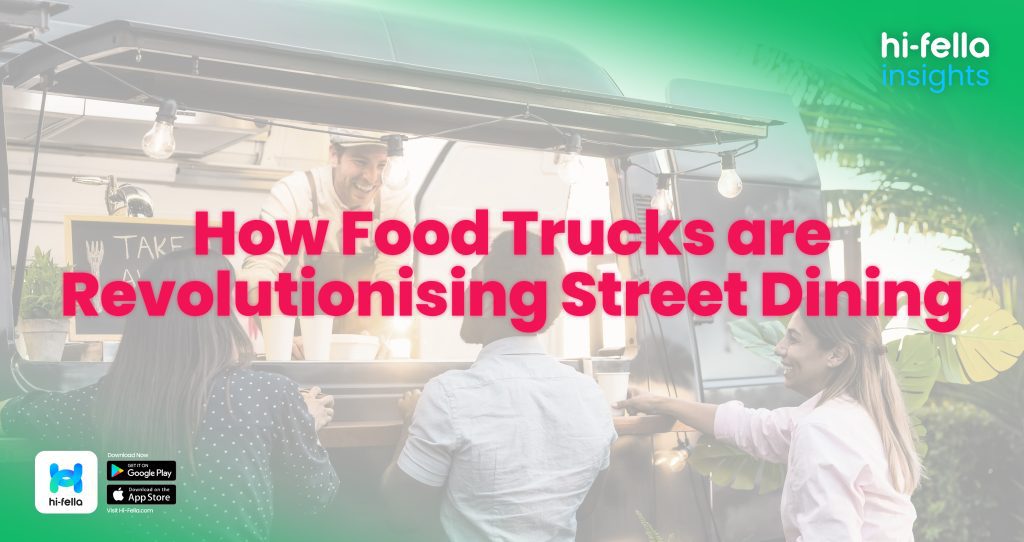Truck food, or food sold from mobile trucks, has become incredibly popular worldwide. From delicious street tacos to gourmet meals, food trucks offer a unique, convenient, and affordable way to enjoy a variety of foods.
This article explores why truck food is on the rise, how it’s different from traditional restaurants, and how it’s creating new opportunities for small business owners and food lovers alike.
The Rise of Truck Food: A Brief History

Source: Riau Post
Food trucks began as simple street vendors but have grown into a full industry. In the early 2000s, food trucks started appearing with creative dishes, attracting a wider audience.
Today, food trucks are everywhere, especially in cities, at events, and near office areas, offering everything from casual snacks to gourmet food at reasonable prices.
The food truck industry has seen significant growth, with a 10.9% CAGR over the past five years. Currently, there are over 58,000 food truck businesses in the U.S., reflecting a 15.9% increase since 2018. This growth indicates not only a rising demand for street food options but also a shift in dining preferences towards more accessible and diverse culinary experiences.
Why Truck Food Is So Popular: Affordable, Convenient, and Creative
Truck food has become a favorite for many because it offers a unique mix of affordability, convenience, and creativity. Here’s why these factors make food trucks such a hit:
1. Affordability
Opening a food truck is much cheaper than launching a traditional restaurant. Traditional restaurants require renting or buying a physical space, renovating, buying furniture, and hiring a larger staff, all of which come with high costs.
In contrast, food trucks offer a lower-cost entry into the food industry, allowing more people to turn their passion for cooking into a business.
This affordability also lets food trucks offer competitive prices, making them an appealing choice for customers looking for delicious food without the high price tag.
2. Convenience
Food trucks are mobile, which means they can be set up in high-traffic areas where customers are already gathered, like parks, office buildings, festivals, and street corners.
This convenience makes truck food easy for busy people who want a quick, quality meal without going to a full restaurant.
Food trucks are also known to update their locations on social media, so their target market can follow their favorite trucks and catch them when they’re nearby. This “on-the-go” nature of food trucks gives customers a fast, accessible way to try new foods.
3. Creativity
Food trucks are often led by chefs and food enthusiasts who aren’t afraid to experiment. Without the rigid menu restrictions that traditional restaurants may have, food truck owners can try new ideas, flavors, and fusion dishes that stand out.
For example, some trucks specialize in unique combinations like Mexican-Asian fusion tacos or vegan soul food, offering customers a fun, adventurous dining experience.
This creative freedom has turned food trucks into a hotbed of culinary innovation, where customers can taste dishes they might not find elsewhere.
Truck Food vs Traditional Restaurants: What’s the Difference?
Food trucks and traditional restaurants each have their own unique qualities. Here’s a quick look at what sets them apart:
1. Lower Startup Costs
Food trucks are much cheaper to start, making them accessible for more entrepreneurs, unlike traditional restaurants that require significant investments.
2. Location Flexibility
Food trucks can move to various spots such as busy offices, parks, or events so that they can make them easy for customers to find, while restaurants are fixed in one location.
3. Closer Customer Connection
Food truck owners often serve customers directly, creating a friendly, personal vibe that builds loyalty, something less common in traditional restaurants.
Statistics show that over 60% of millennials have eaten from a food truck in the past year, illustrating the segment’s popularity among younger consumers.
Customers enjoy the affordability and creativity of street food, with a growing preference for options like tacos, burgers, and plant-based dishes.
4. Smaller, Focused Menus
Limited kitchen space means food trucks usually offer fewer items, allowing them to focus on a few high-quality dishes.
5. Quick Adaptability
Food trucks can easily switch up their menus based on trends or customer feedback, while restaurants need more time and resources to make changes.
6. Lower Overhead Costs
Food trucks avoid many of the high expenses of a full restaurant, allowing them to offer good food at affordable prices.
These factors make truck food a convenient and affordable dining option that’s perfect for customers on the go.
How Truck Food Helps Local Economies
Truck food doesn’t just bring tasty meals to customers; it also supports the local economy. Food truck owners often buy fresh ingredients from local farmers and suppliers.
This helps small businesses and keeps money in the community. Food trucks also attract people to different areas, which can boost business for nearby shops and event venues.
Successful Truck Food Trends and Ideas

Source: Lime Media
As truck food has grown, some popular trends and business ideas have emerged:
1. Fusion Foods
Fusion foods mix flavors from different cultures, creating fun and unique dishes. Examples include Korean BBQ tacos or sushi burritos, which blend tastes from different cuisines into one dish. These creative combinations give customers something new to try and make a food truck stand out from the crowd.
2. Eco-Friendly Menus
Many food trucks now focus on being eco-friendly to appeal to customers who care about the environment. They use fresh, local ingredients and try to reduce waste by choosing compostable packaging and avoiding plastic.
By being environmentally conscious, these food trucks not only help the planet but also attract people who want to support green businesses.
3. Collaborations
Food trucks often team up with local businesses, like coffee shops or breweries, to bring in more customers. For instance, a food truck might park outside a brewery, offering food that pairs well with the drinks.
Working together helps both businesses reach new people and create a fun atmosphere. These partnerships also make it easy to share promotions, which brings more attention to both brands.
4. Seasonal Menus
Many food trucks change their menus based on the season or holidays, like adding pumpkin-flavored dishes in the fall or offering cool, fruity options in the summer. This keeps the menu fresh and gives customers new things to look forward to throughout the year.
Special holiday items, like Valentine’s Day treats or holiday-inspired flavors, also create excitement and encourage customers to stop by for limited-time dishes.
Challenges of Running a Truck Food Business and Solutions
Running a truck food business can be challenging, with issues like:
1. Weather Effects
Bad weather, like rain or extreme heat, can lead to fewer customers and lower sales. To manage this, some food trucks set up tents or look for indoor spots during extreme weather, and others promote online orders to keep sales steady.
2. Small Kitchen Space
With limited room, food truck owners need to plan menus and work efficiently. Investing in compact, multi-functional kitchen equipment and keeping a well-organized space helps make food prep easier and faster.
3. Local Rules and Permits
Food trucks must follow city rules, get permits, and pass health inspections, which can vary by location. Staying informed about local regulations and building good relationships with local authorities can make this process smoother.
To handle these challenges, truck food owners can plan ahead, invest in efficient kitchen setups, and work with local authorities to stay compliant.
Platforms like Hi-Fella also help connect food truck owners with quality suppliers, making it easier to find ingredients and grow their businesses.
The Future of Street Dining: Truck Food’s Impact
Food trucks are likely to become even more popular as cities make room for more mobile dining options. People enjoy the quick, casual nature of truck food, which is also a great way for chefs to test new recipes and styles. Experts predict that as people keep craving unique, quick meals, truck food will play a big role in the future of dining.
Truck food has changed the way people think about dining out by offering affordable, exciting, and accessible food options. Whether you’re a food lover or an aspiring entrepreneur, food trucks provide unique meals and interesting business ideas.
Food trucks also can generate average annual revenues of $346,000, with a profit margin of 6.2%, significantly higher than traditional restaurants.
However, challenges persist; only 40% of food trucks remain operational after three years due to factors like inadequate planning and market competition. Food trucks also face regulatory hurdles and varying local permits, which can complicate operations.
Platforms like Hi-Fella help truck food owners connect with suppliers and partners, making it easier to run a successful business.








